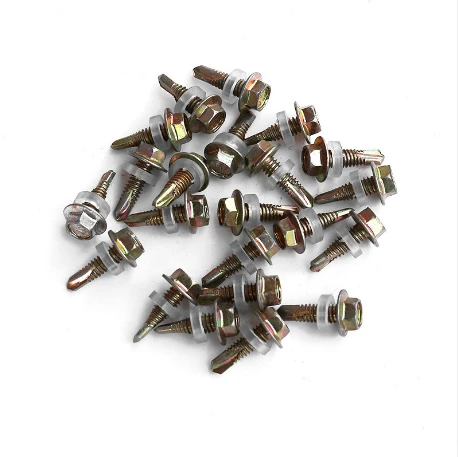

Fasteners and Fixing Solutions for Efficient Assembly and Construction Applications
12월 . 29, 2024 23:58 Back to list
Fasteners and Fixing Solutions for Efficient Assembly and Construction Applications
Fixings and Fasteners The Unsung Heroes of Construction and Manufacturing
In the world of construction and manufacturing, the role of fixings and fasteners often goes unnoticed, yet they are the unsung heroes that hold together various structures and products. From the simplest furniture to the most complex machinery, fixings and fasteners are integral components that ensure stability, safety, and performance. Understanding their types, applications, and importance can illuminate their critical role in various industries.
What Are Fixings and Fasteners?
Fixings and fasteners are essential components used to join or secure two or more items together. While the terms are often used interchangeably, there is a subtle distinction. Fasteners refer to hardware devices like screws, bolts, nuts, and rivets that mechanically hold materials together, while fixings can include not only fasteners but also anchoring elements that help attach objects to surfaces, such as wall anchors and plugs.
Types of Fixings and Fasteners
1. Screws One of the most common fasteners, screws are designed to be inserted into pre-drilled holes. They come in various types, including wood screws, machine screws, and self-tapping screws, each suited for specific materials and applications.
2. Bolts Bolts are typically used in conjunction with nuts and are ideal for holding heavy components. They are available in different grades and lengths, allowing for versatility in structural applications.
3. Nuts and Washers Nuts are hexagonal blocks with a hole that fits onto a bolt. They help secure bolted joints. Washers are flat disks that distribute the load of the nut or bolt and help prevent loosening.
4. Rivets These are permanent fasteners often used in metalwork and construction. Once inserted, the rivet is deformed to secure the joint, making it an ideal solution for situations where welding is impractical.
5. Anchors Used primarily in drywall and masonry applications, anchors secure screws in weak materials. They expand behind the surface, providing a strong hold.
fixings and fasteners

Applications of Fixings and Fasteners
Fixings and fasteners are ubiquitous across various industries. In construction, they are crucial for framing, roofing, and siding. A well-constructed building relies on a myriad of screws, bolts, and anchors to ensure that each element remains in place against the elements and the stresses of use.
In manufacturing, fasteners are just as vital. From assembling furniture to building automobiles, each application requires specific fasteners that can withstand different loads and stresses. The aerospace industry, for instance, demands incredibly robust and lightweight fasteners to ensure both safety and efficiency.
The Importance of Quality
The integrity of fixings and fasteners directly impacts the performance and safety of structures and products. Therefore, choosing high-quality materials is paramount. Manufacturers often adhere to specific standards, such as ISO and ASTM, to ensure that their products meet rigorous safety and performance requirements.
Additionally, the correct selection of fasteners involves considering factors like material compatibility, environmental conditions (such as corrosion resistance), and load requirements. This attention to detail ensures long-lasting durability and functionality.
Innovations in Fixings and Fasteners
As technology advances, so do the materials and designs of fixings and fasteners. Innovations such as corrosion-resistant coatings, self-locking mechanisms, and smart fasteners with sensors are emerging. These advancements enhance performance, extend service life, and improve safety in various applications.
Conclusion
In conclusion, while fixings and fasteners may not capture headlines, their significance in construction and manufacturing cannot be overstated. They are fundamental components that hold together everything from homes and bridges to automobiles and electronic devices. A deeper understanding of their types, applications, and quality considerations reveals not just their importance but also the innovation and engineering that goes into these often-overlooked elements of our everyday lives. Ensuring that fixings and fasteners are selected and applied correctly is essential for the safety and durability of any construction or manufacturing project.
Latest news
-
High-Strength Hot Dip Galvanized Bolts - LongZe | Corrosion Resistance, Custom Sizes
NewsAug.01,2025
-
Best Self Tapping Screws for Drywall - Fast & Secure Installation
NewsJul.31,2025
-
High-Strength Hot Dip Galvanized Bolts-Hebei Longze|Corrosion Resistance&Customization
NewsJul.31,2025
-
Hot Dip Galvanized Bolts-Hebei Longze Metal Products|Corrosion Resistance&High Strength
NewsJul.31,2025
-
Hot Dip Galvanized Bolts-About LongZe|High Strength, Corrosion Resistance
NewsJul.30,2025
-
High-Strength Hot Dip Galvanized Bolts - Hebei Longze | Corrosion Resistance, Customization
NewsJul.30,2025

